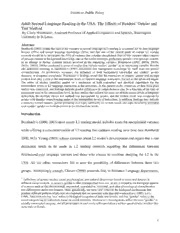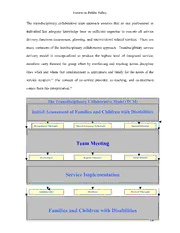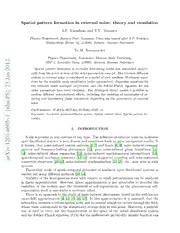
Spatial Pattern Formation in External Noise: Theory and Simulation PDF
Preview Spatial Pattern Formation in External Noise: Theory and Simulation
Spatial pattern formation in external noise: theory and simulation S.E. Kurushina and V.V. Maximov Physics Department, Samara State Aerospace University named after S.P. Korolyov, Moskovskoye Shosse 34, 443086, Samara, Russian Federation Yu.M. Romanovskii Physics Department, Lomonosov Moscow State University, 2 GSP-1, Leninskie Gory, 119991, Moscow, Russian Federation 1 0 2 Spatial pattern formation in excitable fluctuating media was researched analyti- n cally from the point of view of the order parameters concept. The reaction-diffusion a system in external noise is considered as a model of such medium. Stochastic equa- J tions for the unstable mode amplitudes (order parameters), dispersion equations for 3 2 the unstable mode averaged amplitudes, and the Fokker-Planck equation for the order parameters have been obtained. The developed theory makes it possible to ] S analyze different noise-induced effects, including the variation of boundaries of or- P dering and disordering phase transitions depending on the parameters of external . n noise i l n PACS numbers: 05.40.Ca,89.75.Kd, 02.50.Ey,05.65.+b [ Keywords: Stochastic reaction-diffusion system, Spatial colored noise, Spatial pattern for- 1 v mation 5 9 6 I. INTRODUCTION 4 . 1 0 Noise is present in real systems of any type. The influence of external noise on nonlinear 2 open distributed systems is very diverse and sometimes leads to quite unexpected results. It 1 is known, that noise-induced spatial patterns [1–7] and fronts [8, 9], noise-induced resonant : v pattern and frequency-locking phenomena [10], pure noise-induced phase transitions [11– i X 14], noise-induced phase separation [15], noise-induced spatiotemporal intermittency [16], r spatiotemporal stochastic resonance [17–19], noise-supported traveling and noise-sustained a convective structures [20–22], noise-induced synchronization [23–25], etc., may arise in such systems. Theoretical study of spatio-temporal dynamics of nonlinear open distributed systems is carried out using different methods [26–34]. Stability of the homogeneous state with respect to small perturbations can be analyzed in linear approximation. However, linear approximation is not acceptable to describe the evolution of the system near the threshold of self-organization, as the phenomenon self- organization itself is essentially a nonlinear effect. There is an approach to the study of noise-induced phenomena, based on the well-known mean-field approximation [4, 12, 15, 26, 27]. In this approximation it is assumed, that the interaction between a certainspatial pointanditsnearest neighborsoccurs throughthefield, whose value corresponds to the statistically average field at this point. Herewith, a suitable way is used to carry out the discretization of the space of the initial distributed system and the Fokker-Planck equation (FPE) for the multivariate probability density function can 2 be written for field values in the points received by a regular lattice. The obtained FPE is integrated over the values of the field at all points except the given one. This leads to FPE for the one-dimensional probability density function values of the field at a given point. In the latter equation the conditional average values of the field at neighboring points are replaced by an average value of the field at a given point. This approach can predict the existence of noise-induced “disorder-order-disorder” phase transitions. Another analytical approach to the study of nonequilibrium phase transitions with the spatial pattern formation is based on generalized Ginzburg-Landau equations for the order parameters of the systems. This approach makes it possible to describe the behavior of the system near the transition point. It is based on the separation of eigenmodes of the system into damped (stable) and undamped (unstable) modes (order parameters), and into adia- batic elimination of stable modes. The method of generalized Ginzburg-Landau equations for the systems, the right-hand side of which contains additive white noise, is described in [29]. In papers [14, 34] spatio-temporal evolution of the nonequilibrium extended systems is investigated by means of dynamic renormalization groups. In [14] it is shown that under certain conditions a new genuine nonequilibrium universality class arises due to the presence of multiplicative noise. Moreover, there are approaches based on analysis of correlation functions of the dynamic variables of the system or structure functions [3, 12], on the study of higher-order moments [6, 32], and others [30, 31, 33, 36]. The aim of this paper is to develop a theory, which would allow us from the unified point of view of the concept of order parameters, to carry out a consistent and detailed study of spatial pattern formation spontaneously arising in open nonlinear distributed systems with external noise both in the vicinity of the transition point and away from it. II. STOCHASTIC EQUATIONS FOR THE ORDER PARAMETERS Systems of the reaction-diffusion type ∂x k = P (x ,x ,x ,...,η,r,t)+D ∇2x ,k = 1,2,3... (1) k 1 2 3 k k ∂t are one of the basic models of a nonequilibrium excitable medium. In equation (1) x are the k medium state functions (dynamic variables), P (x ,x ,x ,...,η,r,t) are nonlinear functions, k 1 2 3 that define the interaction and the evolution of the component x in space and in time, k D are diffusion coefficients of components, η = (χ ,...,χ ,η ,...,η ) is the vector, whose k 1 n 1 s components are the control parameters describing the effect of the external environment on the system. Further, without loss of generality, we consider a two-component system of type (1). Nevertheless, the proposed research method is easily extended to multicomponent systems. In external noise the spatio-temporal dynamics of nonequilibrium systems (1) for k = 2 can be described by the following system of equations: m ∂∂xt1 = P1(x1,x2,χ10,...,χm0,...,χn)+ f1j(r,t)P1j(x1,x2,χm+1,...,χn′)+D1∇2x1, j=1 (2) Pl ∂∂xt2 = P2(x1,x2,η10,...,ηl0,...,ηs)+ f2j(r,t)P2j(x1,x2,ηl+1,...,ηs′)+D2∇2x2, j=1 P 3 where m and l are the number of fluctuating parameters in the first and second equations, respectively, χ , η are spatio-temporal average parameters, f (r,t) (i=1,2) are random j0 j0 ij fields describing the noise of the appropriate parameters with respect to their mean values with hf (r,t)i = 0. ij We define the statistical properties of random fields f (r,t) according to the properties ij of the environment. Fluctuations in the environment represent the summarized effect of many weakly coupled factors. It follows from the central limit theorem, that fluctuations of the external source have a Gaussian distribution. The ergodic Markovian and Gaussian properties of fluctuating environment limits the choice of random fields for modeling the fluctuations of the environment by a stationary homogeneous isotropic Gaussian field with the exponential time-correlation function [28]: K[fij(r,t),fi′j′(r′,t′)] = Φi(|r−r′|)exp(−kti|t−t′|)δii′δjj′, (3) where Φ (|r−r|) define the spatial dependence of correlation functions of the random fields. i ′ The cross-correlation of the fields fij(r,t) and fi′j′(r,t) is absent. The correlation time r = k 1 is the characteristic time scale of external noise. Hereafter, we use the notation t t− K[F ,F ], that is defined by the equality K[F ,F ] = hF F i−hF ihF i for the correlation 1 2 1 2 1 2 1 2 function. Let us assume for simplicity, that m = l = 1, and introduce the dimensionless variables τ = χ t and r = r χ /D , where χ is a parameter, that has the dimension of inverse 10 ′ 10 1 10 time. Now the systeqm (2) can be rewritten as ∂∂xτ1 = P1′(x1,x2,χ10,...,χn)+f11(r′,τ)P1′1(x1,x2,χ2,...,χn′)+∇′2x1, (4) ∂∂xτ2 = P2′(x1,x2,η10,...,ηs)+f21(r′,τ)P2′1(x1,x2,η2,...,ηs′)+D∇′2x2. Functions with primes are different from the corresponding functions without primes by a multiplier χ 1. D = D /D . Hereafter, the primes are dropped for simplicity. −10 2 1 Suppose, that in the deterministic case the values of parameter χ ,...,χ ,η ,...,η 1 n 1 s are such, that there are stable stationary states x and x defined by the equations 10 20 P (x ,x ,χ ,...,χ ) = 0 and P (x ,x ,η ,...,η ) = 0. 1 1 2 1 n 2 1 2 1 s We write the equations (4) in the operator form. Simultaneously, we select from its right-hand side linear K(∇2)q, nonlinear g(q), and random F(r,τ) components [29] ∂q −K(∇2)q = g(q)+F(r,τ). (5) ∂τ Vector q describes the deviation of the dynamic variables from their equilibrium values: q = (x −x ,x −x ). A linear operator K(∇2) takes the form 1 10 2 20 a +∇2 a ∂P K(∇2) = 11 12 , a = i , i,j = 1,2. (6) a21 a22 +D∇2 ! ij ∂xj(cid:12)(cid:12)x10,x20 (cid:12) Vector g(q) contains quadratic and cubic nonlinearities o(cid:12)btained by series expansion of (cid:12) the right-hand deterministic side of the equation (4). Its components are defined as follows 2 2 g (q) = g(2) q q + g(3) q q q , (7) i i,µν µ ν i,µνκ µ ν κ µ,ν=1 µ,ν,κ=1 X X where g(2) = 1 ∂2Pi , g(3) = 1 ∂3Pi . i,µν 2! ∂xµ∂xν x10,x20 i,µνκ 3! ∂xµ∂xν∂xκ x10,x20 (cid:12) (cid:12) (cid:12) (cid:12) (cid:12) (cid:12) 4 Vector F contains the random fields: F = f11(r,τ)P11(x1,x2,χ2,...,χn′) . f21(r,τ)P21(x1,x2,η2,...,ηs′) ! To research the stability of the stationary state of a deterministic system, we assume that the vector q has the form q = q exp(λτ +ikr). The respective characteristic equation 0 λ2 −αλ+β = 0 has solutions α(k)± α2(k)−4β(k) λ (k) = , (8) 1,2 q 2 where α(k) = Tr(a )−(1+D)k2, β(k) = Det(a )−(Da +a )k2 +Dk4. ij ij 11 22 Conditions α(k) < 0 and β(k) ≤ 0 define aperiodic instability, herewith one positive real root of eq. (8) appears: Re(λ ) ≥ 0, Im(λ ) = 0. Further we shall consider only this case. 1 1,2 Suppose, that one of the parameters χ ,...,χ ,η ,...,η , for example χ , is bifurcation, 1 n 1 s 2 i.e., at some critical value of this parameter χ there exists a critical wave number k , when 2c c the conditions Re(λ (k )) = 0, d(Reλ1(k)) = 0 are fulfilled. 1 c dk k=kc Represent the vector q in the form of(cid:12)superposition (cid:12) (cid:12) q(r,τ) = O(j)(k)ξ(j)(τ)eik′r, (9) ′ k′ k′,j X where O(j)(k) are eigenvectors of operator K(∇2), ξ(j)(τ) are unknown amplitudes, exp(ikr) k are eigenfunctions of operator ∇2. Here it is assumed, that the vector q(r,τ) is a superpo- sition of plane waves, but depending on the symmetry of the problem Bessel functions or spherical wave functions are to be chosen as the eigenfunctions. The vector F contains nonlinear functions P . They need to be expanded in a Taylor i1 series in powers of the components of vector q. We restrict our consideration to quadratic terms in the expansion of P . It is easily shown, that the terms of this order are necessary i1 to obtain the dispersion equation for the averaged amplitudes of the unstable modes with an accuracy to terms quadratic in the fluctuation intensity. As a result, the components of vector F containing random fields take the form: 2 2 F = f (r,τ) p(0) + p(1)q + p(2) q q , i i1 i i,µ µ i,µν µ ν µ=1 µ,ν=1 X X where p(0) = P (x ,x ), p(1) = ∂Pi1 , p(2) = 1 ∂2Pi1 . i i1 10 20 i,µ ∂xµ x10,x20 i,µν 2! ∂xµ∂xν x10,x20 Unstable modes lie in a narrow b(cid:12)and of wavenumbers d(cid:12)efining the instability region of (cid:12) (cid:12) (cid:12) (cid:12) the system. This makes it possible to construct wave packets by summing over the wave vectors, which lie in a small interval. Thus, carrying modes with discrete values of wave (j) vectors and slowly varying amplitudes ξ (τ) are chosen [29]. k (j) To obtain the equations for the mode amplitudes ξ (τ) we substitute eq. (9) in eq. (5), k multiplytheequationderivedontheleftbyexp(−ikr)O (j′)(k)andintegrateovertheregion, ∗ which is much greater than the oscillation period exp(ikr), but in which ξ(j)(τ) varies very k little. Here O∗(j′)(k) are eigenvectors of the operator conjugate to K(∇2): O(j)O∗(j′) = δjj′. After transformations, the system of equations for the amplitudes of the modes takes the form 5 (j) dξk −λ (k)ξ(j) = σ(j) (k,k,k )ξ(j′)ξ(j′′)δ(k +k −k)+ (10) dτ j k j′j′′ ′ ′′ k′ k′′ ′ ′′ j′j′′,k′k′′ X 2 + σ(j) (k,k,k ,k )ξ(j′)ξ(j′′)ξ(j′′′)δ(k +k +k −k)+ O (j)(k)p(0)z (τ)+ j′j′′j′′′ ′ ′′ ′′′ k′ k′′ k′′′ ′ ′′ ′′′ ϕ∗ ϕ ϕ,k j′j′′j′′′,k′k′′k′′′ ϕ=1 X X 2 2 + ε(ϕj,)j′(k,k′)ξk(j′′)zϕ,k k′(τ)+ ε(ϕj,)j′j′′(k,k′,k′′)ξk(j′′)ξk(j′′′′)zϕ,k k′ k′′(τ). ϕ=1j′,k′ − ϕ=1j′j′′,k′k′′ − − X X X X Functions σ(j) (k,k,k ), σ(j) (k,k,k ,k ), ε(j) (k,k), ε(j) (k,k,k ) introduced in j′j′′ ′ ′′ j′j′′j′′′ ′ ′′ ′′′ ϕ,j′ ′ ϕ,j′j′′ ′ ′′ equations (10) are presented in the Appendix A. Random processes z (τ) = f (r,τ)e ikrdr are components of the random vector field ϕ,k ϕ1 − z(τ) with zero mean, ϕ and k are index arguments of this field. R Assuming, that the correlation time of random fields is considerably smaller than all the characteristic times of the deterministic problem (4), correlation functions for the compo- nents offield z(τ) will have theform: K[zj,k(t),zl,k′(τ)] = gjl(|k|)δ(k−k′)δ(t−τ)δjl. Further we assume for definiteness Φ (|r−r|) = θ exp(−k |r−r|). (11) j ′ j fj ′ Here θ are noise intensity, k are magnitudes inverse to correlation length. For two- j fj dimensional media g = θ k /[2π2(k2 +k2 ) 3/2]. jj j fj fj − The system (10) contains both stable and unstable modes. In the vicinity of the bi- furcation point the relaxation times of unstable modes are considerably greater then the relaxation times of stable modes, therefore the latter adiabatically follow the former ones. This makes it possible to exclude the stable modes from the equations (10). To perform the procedure of adiabatic elimination [29, 30] of stable modes, we rewrite the system of equations (10) dividing it into two subsystems of equations for the unstable modes (denote them by an additional index (u)) and for the stable modes (s). Since the unstable modes can grow to infinity if we neglect the nonlinear terms, we write equations for them with an accuracy of cubic terms, which provide nonlinear stabilization of the instability (if the cubic terms are not enough, it is necessary to take into account the fifth orders). We assume that the amplitudes of stable modes are significantly smaller than the ampli- tudes of unstable modes |ξ | << |ξ | and their variations occur self-consistently: ξ ∼ ξ2. In s u s u addition, z ∼ ξ . ϕ,k s In the equations for the stable mode amplitudes we keep only the terms necessary to obtain the equations for the unstable mode amplitudes with an accuracy to third-order terms. Then from eq. (10) for the stable mode amplitudes we obtain the following equation: (j) dξ ks −λ (k )ξ(j) = σ(j)(k ,k ,k )ξ(1)ξ(1) δ(k +k −k )+ (12) dτ j s ks 11 s ′u ′′u k′u k′′u ′u ′′u s k′uk′′u X 2 2 + Oϕ∗(j)(ks)p(ϕ0)zϕ,ks(τ)+ ε(ϕj,)1(ks,k′u)ξk(1′u)zϕ,ks k′u(τ)+ ϕ=1 ϕ=1k′u − X X X 2 + ε(ϕj,)11(ks,k′u,k′′u)ξk(1′u)ξk(1′′)uzϕ,ks k′u k′′u(τ). ϕ=1k′uk′′u − − X X 6 The equations for the unstable mode amplitudes have the form: (1) dξ ku −λ (k )ξ(1) = σ(1)(k ,k ,k )ξ(1)ξ(1) δ(k +k −k )+ (13) dτ 1 u ku 11 u ′u ′′u k′u k′′u ′u ′′u u k′uk′′u X + σ(1)(k ,k ,k ,k )ξ(1)ξ(1) ξ(1) δ(k +k +k −k )+ 111 u ′u ′′u ′′′u k′u k′′u k′′′u ′u ′′u ′′′u u k′uk′′uk′′′u X 2 2 + Oϕ∗(1)(ku)p(ϕ0)zϕ,ku(τ)+ ε(ϕ1,)1(ku,k′u)ξk(1′u)zϕ,ku k′u(τ)+ ϕ=1 ϕ=1k′u − X XX 2 + ε(ϕ1,)11(ku,k′u,k′′u)ξk(1′u)ξk(1′′)uzϕ,ku k′u k′′u(τ)+ ϕ=1k′uk′′u − − X X 2 + ε(1) (k ,k )ξ(ψ)z (τ)+ ϕ,ψ u s ks ϕ,ku ks − ψ,ϕ=1 ks X X 2 + σ(1)(k ,k ,k )+σ(1)(k ,k ,k ) ξ(1)ξ(ψ)δ(k +k −k )+ 1ψ u ′u s ψ1 u s ′u k′u ks ′u s u ψX=1kX′uksh i 2 + ε(ϕ1,)1ψ(ku,k′u,ks)+ε(ϕ1,)ψ1(ku,ks,k′u) ξk(1′u)ξk(ψs)zϕ,ku k′u ks(τ). ψX,ϕ=1kX′uksh i − − (j) Neglecting the time derivative dξ /dτ in equations (12) [29], expressing the amplitudes ks (j) ξ from them and substituting the latter in eq. (13), we obtain a system of equations for ks (1) the unstable mode amplitudes ξ : ku (1) dξ ku = F (τ), (14) ku dτ F (τ) = λ (k )ξ(1) + σ(1)(k ,k ,k )ξ(1)ξ(1) δ(k +k −k )+ ku 1 u ku 11 u ′u ′′u k′u k′′u ′u ′′u u k′uk′′u X + ω(k ,k ,k ,k ,k −k )ξ(1)ξ(1) ξ(1) δ(k +k +k −k )+ u ′u ′′u ′′′u u ′u k′u k′′u k′′′u ′u ′′u ′′u u k′uk′′uk′′′u X 2 2 + Oϕ∗(1)(ku)p(ϕ0)zϕ,ku(τ)− ζϕ,ψ,ϕ′(ku,ks)zϕ,ku ks(τ)zϕ′,ks(τ)+ ϕ=1 ψ,ϕ,ϕ′=1 ks − X X X 2 2 +ϕ=1k′uηϕ(ku,k′u)ξ~k(1′u)zϕ,ku−k′u(τ)+ϕ=1k′uk′′uνϕ(ku,k′u,k′′u)ξk(1′u)ξk(1′′)uzϕ,ku−k′u−k′′u(τ)− XX X X 2 − Aϕ,ψ,ϕ′(ku,ks,k′u)ξk(1′u)zϕ′,ks k′u(τ)zϕ,ku ks(τ)− ψ,ϕ,ϕ′=1ks,k′u − − X X 2 − Bϕ,ψ,ϕ′(ku,ks,k′u)ξk(1′u)zϕ,ku k′u ks(τ)zϕ′,ks(τ)− ψ,ϕ,ϕ′=1k′uks − − X X 2 − Cϕ,ψ,ϕ′(ku,ks,k′u,k′′u)ξk(1′u)ξk(1′′)uzϕ′,ks k′u k′′u(τ)zϕ,ku ks(τ)− ψ,ϕ,ϕ′=1k′uk′′uks − − − X X 7 2 − Dϕ,ψ,ϕ′(ku,k′u,ks,k′′u)ξk(1′u)ξk(1′′)uzϕ,ku k′u ks(τ)zϕ′,ks k′′u(τ)− ψ,ϕ′,ϕ=1k′uk′′uks − − − X X 2 − Eψ,ϕ(ku,k′u,ku −k′u,k′′u,k′′′u)ξk(1′u)ξk(1′′)uξk(1′′)′uzϕ,ku k′u k′′u k′′′u(τ)− ψ,ϕ=1k′uk′′uk′′′u − − − X X 2 − Fψ,ϕ(ku,k′u,k′′u,k′′′u)ξk(1′u)ξk(1′′)uξk(1′′)′uzϕ,ku k′u k′′u k′′′u(τ)− ψ,ϕ=1k′uk′′uk′′′u − − − X X 2 − Gψ,ϕ,ϕ′(ku,k′u,ks,k′′u,k′′′u)ξk(1′u)ξk(1′′)uξk(1′′)′uzϕ,ku k′u ks(τ)zϕ′,ks k′′u k′′′u(τ). ψ,ϕ′,ϕ=1k′uk′′uk′′′uks − − − − X X Function ω(k ,k ,k ,k ,k −k ) and others introduced in equations (14) are presented u ′u ′′u ′′′u u ′u (1) in the Appendix B. The modes ξ areorder parameters. Their collaborationor competition ku determines the behavior of the system. The system of equations (14) is still difficult to analyze because it contains random components. Further analysis of the equations (14) may consist in their statistical averaging or in obtaining the Fokker-Planck equation. III. STATISTICAL AVERAGING For statistical averaging we used the relationship between the moments and the cor- relation functions [37] and multi-dimensional generalization of Furutsu - Novikov formula [31]. Taking into account the formal solution of Eqs. (14) and assuming, that we can ne- glect higher than second order correlation functions, it can be shown, that in Eqs. (14)the (1) (1) (1) (1) (1) (1) terms containing the product ξk′uξk′′uξk′′′uzϕ,k1(τ)zϕ′,k2(τ) and ξk′uξk′′uξk′′′uzϕ,k(τ) must be (1) discarded since they do not contribute to the average values of the modes ξ in averaging. ku We note here, that the procedure of correlation splitting leads to the appearance of a similar correlation for the other interacting modes. Therefore, this procedure should be performed until all the terms containing the necessary degree of intensity fluctuations are taken into account. The remaining correlation functions can be neglected owing to their smallness, as the terms obtained after their splitting are proportional to a higher degree of noise intensity. In order to obtain after averaging corrections to the increments of unstable mode am- plitudes with an accuracy to terms quadratic in the noise intensity, when calculating the functional derivatives in the Furutsu - Novikov formula it is necessary to retain the terms (1) containing the product ξ z (τ). k′u ϕ,k Below is given only the structure of equations obtained by the procedure of averaging since they have a very complicated form: (1) d ξ ku −λ (k ) ξ(1) = L (k )+L (k ,k ) ξ(1) + (15) Ddτ E 1 u ku 0 u 1 u ′u k′u D E D E +L (k ,k ,k ,k ,k ) ξ(1) ξ(1) +L k ,k ,k ,k ,kIV,k ,k ξ(1) ξ(1) ξ(1) . 2 u ′u ′′u ′′′u s k′′u k′′′u 3 u ′u ′′u ′′′u u s ′s k′′u k′′′u kIVu D E (cid:16) (cid:17)D E The analysis of the equations (15) leads to the following conclusions. (1) First, after the averaging of Eqs. (14) additional terms, that do not depend on ξ , ku arise in (15). They are determined by the parameters of the problem, the type Dof thEe correlation function g , the noise intensity, and the wavenumber of a given mode. jj 8 (1) Second, inthe system (15) there areadditional terms proportionalto ξ . This leads to ku a variation of eigenvalues of unstable mode amplitudes in comparison wiDth thEe deterministic case. As a result, the region of instability of the system, the beginning of the process of destruction of a statistically stationary homogeneous state and pattern formation as well as the duration of the transitional regime from one statistically stationary state to another are changed. Selecting from L (k ,k ) the terms that contribute to the increment of ξ(1) , we obtain 1 u ′u ku the dispersion equation D E λ = λ (k )+L (k ,k )+L (k ,−k ). (16) 1 u 1 u u 1 u u (1) (1) (1) When deriving eq.(16) we take into account the, fact that ξ = ξ∗ = ξ , because the ku ku ku solutions of equations (14) must be real. From equation (16−) and expressions L (k ,k ) 1 u ′u and g , it follows, that increments (Re λ) of the unstable mode averaged amplitudes are ii proportional to the intensity of noise and depend on the correlation length. Herewith, the intensity of noise becomes another bifurcation parameter and patterns begin to form, when the parameter χ is different from χ . Research of particular systems shows, that the value 2θ 2c ofthebifurcationparameterχ isshiftedtothesubcriticalregionforthecaseofdeterministic 2 description. Finally, we note, that in the external random fields pattern formation occurs due to multimode interactions, whereby the conditions the resonant interaction of the modes are also different from the deterministic case. In particular, interaction between different configurations of modes with the modes with doubled wavenumbers arises, for example 2k −k = k , as well as the five-mode interaction. ′u ′′u u Thus, the above theoretical analysis allows us to describe the evolution of the stochastic systems under consideration, in the vicinity of the Turing bifurcation point in more detail. IV. FOKKER-PLANCK EQUATION FOR THE ORDER PARAMETERS Ifthesystem parameters aresuch thatitisinthesupercritical regionthenwithincreasing noise intensity, the system will ”go” farther and farther from the bifurcation point of a deterministic system. To describe the state of the system in this case we can use the Fokker- Planck equation. Forthesystem (14) theFokker -Planck equationcan bewrittenin general formasfollows [35]: ∂w ξ(1) ,τ ∂ 0 ∂F (τ) ku ku = − hF (τ)i+ K[ ,F (t)]dt w + (17) (cid:16)n∂τ o (cid:17) Xku ∂ξk(1u) ku Xqu Z ∂ξq(1u) qu ′ ′ −∞ 0 ∂2 + K[F (τ),F (t)]dt w . ∂ξ(1)∂ξ(1) ku qu ′ ′ kXu,qu ku qu Z −∞ Here w ξ(1) ,τ is multivariate probability density, which determines the probability of ku some co(cid:16)nnfiguroatio(cid:17)n of unstable modes ξ(1) . After transformation with an accuracy to ku terms linear in the noise intensity we cannobtoain the correlation functions appearing in (17): 9 ∂F (τ) K[ ku ,F (t)] = η (k ,q )O (1)(q )p(0)g (|k −q |)δ δ(τ −t)+ ∂ξ(1) qu ′ ϕ u u ϕ∗ u ϕ ϕϕ u u ku−qu,qu ′ qu ϕ X + [ν (k ,q ,k −2q )+ν (k ,k −2q ,q )]O (1)(q )p(0)g (|q |)ξ δ(τ −t)+ ϕ u u u u ϕ u u u u ϕ∗ u ϕ ϕϕ u ku 2qu ′ − ϕ X + η (k ,q )η (q ,2q −k )g (|k −q |)ξ δ(τ −t)+ ϕ u u ϕ u u u ϕϕ u u 2qu ku ′ − ϕ X + ηϕ(ku,qu)νϕ(qu,q′u,2qu −ku −q′u)gϕϕ(|ku −qu|)ξq′uξ2qu ku q′uδ(τ −t′)+ ϕ,q′u − − X + [ν (k ,q ,k −2q +q +q )+ν (k ,k −2q +q +q ,q )]× ϕ u u u u ′u ′′u ϕ u u u ′u ′′u u ϕ,q′u,q′′u X ×νϕ(qu,q′u,q′′u)gϕϕ(|qu −q′u −q′′u|)ξq′uξq′′uξku 2qu+q′u+q′′uδ(τ −t′)+ − + η (q ,q )[ν (k ,k −2q +q ,q )+ν (k ,q ,k −2q +q )]× ϕ u ′u ϕ u u u ′u u ϕ u u u u ′u ϕ,q′u X ×gϕϕ(|qu −q′u|)ξq′uξku 2qu+q′uδ(τ −t′), − 2 2 K[F (τ),F (t)] = O (1)(k ) p(0) g (|k |)δ δ(τ −t)+ ku qu ′ ϕ∗ u ϕ ϕϕ u ku,qu ′ ϕ Xh i (cid:16) (cid:17) + η (k ,k −q )O (1)(q )p(0)g (|q |)ξ δ(τ −t)+ ϕ u u u ϕ∗ u ϕ ϕϕ u ku qu ′ − ϕ X + νϕ(ku,k′u,ku −k′u −qu)Oϕ∗(1)(qu)p(ϕ0)gϕϕ(|qu|)ξk′uξku k′u quδ(τ −t′)+ ϕ,k′u − − X + η (q ,q −k )O (1)(k )p(0)g (|k |)ξ δ(τ −t)+ ϕ u u u ϕ∗ u ϕ ϕϕ u qu ku ′ − ϕ X + ηϕ(ku,ku −qu +q′u)ηϕ(qu,q′u)gϕϕ(|qu −q′u|)ξq′uξku qu+q′uδ(τ −t′)+ ϕ,q′u − X + νϕ(ku,k′u,ku −k′u −qu +q′u)ηϕ(qu,q′u)gϕϕ(|qu−q′u|)ξk′uξq′uξku k′u qu+q′uδ(τ−t′)+ ϕ,k′u,q′u − − X + νϕ(qu,q′u,qu −q′u −ku)Oϕ∗(1)(ku)p(ϕ0)gϕϕ(|ku|)ξq′uξqu q′u kuδ(τ −t′)+ ϕ,q′u − − X + νϕ(qu,q′u,qu −q′u −ku +k′u)ηϕ(ku,k′u)gϕϕ(|ku−k′u|)ξk′uξq′uξqu q′u ku+k′uδ(τ−t′)+ ϕ,k′u,q′u − − X + ν (k ,k ,k −k −q +q +q )ν (q ,q ,q )× ϕ u ′u u ′u u ′u ′′u ϕ u ′u ′′u ϕ,k′u,q′u,q′′u X ×gϕϕ(|qu −q′u −q′′u|)ξk′uξq′uξq′′uξku k′u qu+q′u+q′′uδ(τ −t′). − − Suppose, that the space of the system under study is two-dimensional. If in this space there is only one unstable mode with the wave vector k and amplitude ξ the equation c kc (17) is significantly simplified 10 ∂w(ξ ,τ) ∂ ∂w kc = − (aξ +bξ3 )w −(c+dξ2 +eξ4 ) . (18) ∂τ ∂ξkc" kc kc kc kc ∂ξkc# Here 1 a = λ (k )− η2(k ,k )g (0)− ν (k ,k ,k )O (1)(k )p(0)g (k ), 1 c 2 ϕ c c ϕϕ ϕ c c c ϕ∗ c ϕ ϕϕ c ϕ ϕ X X b = ω(k ,k ,k ,k ,0)− ν2(k ,k ,k )g (k ), c c c c ϕ c c c ϕϕ c ϕ X 1 2 c = O (1)(k )p(0) g (k ), 2 ϕ∗ c ϕ ϕϕ c Xϕ h i 1 d = η2(k ,k )g (0)+ ν (k ,k ,k )O (1)(k )p(0)g (k ), 2 ϕ c c ϕϕ ϕ c c c ϕ∗ c ϕ ϕϕ c ϕ ϕ X X 1 e = ν2(k ,k ,k )g (k ). 2 ϕ c c c ϕϕ c ϕ X The stationary solution of equation (18) has the form: 2ae−bd w(ξkc) = N|c+dξk2c +eξk4c|4be(cid:12)22eeξξkk22cc++dd−+√√dd22−−44eecc(cid:12)4e√d2−4ec, d2 > 4ec, (19) = N|c+dξk2c +eξk4c|4be e(cid:12)(cid:12)(cid:12)xp 2e2√a4ee−cbdd2ar(cid:12)(cid:12)(cid:12)ctg √2e4ξek2cc+dd2 , 4ec > d2. (cid:20) − (cid:18) − (cid:19)(cid:21) Here N is the normalization constant: 2ae−bd N = 1/+∞|c+dξk2c +eξk4c|4be 22eeξξk22c++dd−+√√dd22−44eecc 4e√d2−4ecdξkc, d2 > 4ec, (cid:12) kc − (cid:12) (20) = 1/−+R∞∞|c+dξk2c +eξk4c|4be(cid:12)(cid:12)(cid:12)exp 2e2√a4ee−cbdd2a(cid:12)(cid:12)(cid:12)rctg √2e4ξek2cc+dd2 dξkc, 4ec > d2. (cid:20) − (cid:18) − (cid:19)(cid:21) −R∞ Inthefollowing sectionnoise-induced effects, which ariseduringTuringpatternformation in the well-known biophysical system, will be studied. We compare the analytical results obtained using the above-developed approach with the results of numerical experiments. V. NOISE-INDUCED EFFECTS IN ONE COMPLICATED BIOPHYSICAL SYSTEM A mathematical model of the system under study is described by equations [38–40]: ∂x1 = rx (1−x )− ax1x2 +D ∇2x , ∂∂xt2 = ax11x2 −m1x −1+gb2xx122 f +1D ∇12x , (21) ∂t 1+bx1 2 1+h2x22 2 2
The list of books you might like

The 48 Laws of Power

Do Epic Shit

The Subtle Art of Not Giving a F*ck

As Good as Dead

Banquete de los eruditos Libros XI-XIII
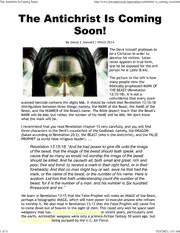
The Antichrist Is Coming Soon!

Bürgerliches Recht I: Fall · Systematik · Lösung Allgemeiner Teil

Modern Asian Studies 2006: Vol 40 Index

Svoboda-2006-33
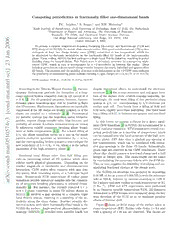
Competing periodicities in fractionally filled one-dimensional bands

Regulation and Genetics: Bacterial DNA Viruses

C anton (©bsterber

My Sister, My Love

BVCM002573 M-30

The Fantasy Trip. Death Test
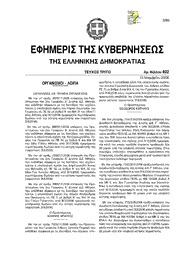
Greek Government Gazette: Part 3, 2006 no. 402
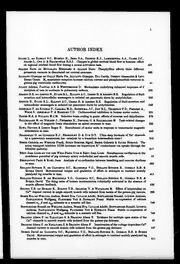
The Journal of Physiology 1993: Vol 471 Index
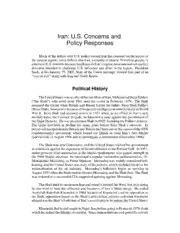
DTIC ADA473786: Iran: U.S. Concerns and Policy Responses

By Blood Alone
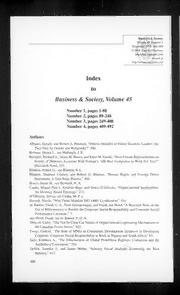
Business and Society 2006: Vol 45 Index

IT-Governance als Teil der organisationalen Governance: Ausgestaltung der IT-Entscheidungsrechte am Beispiel der öffentlichen Verwaltung

